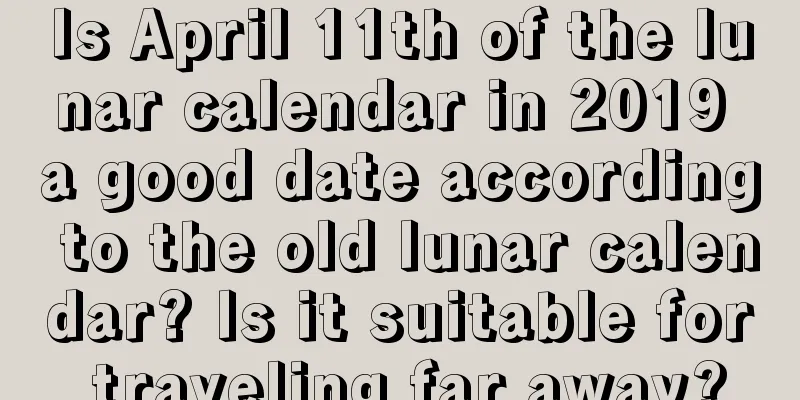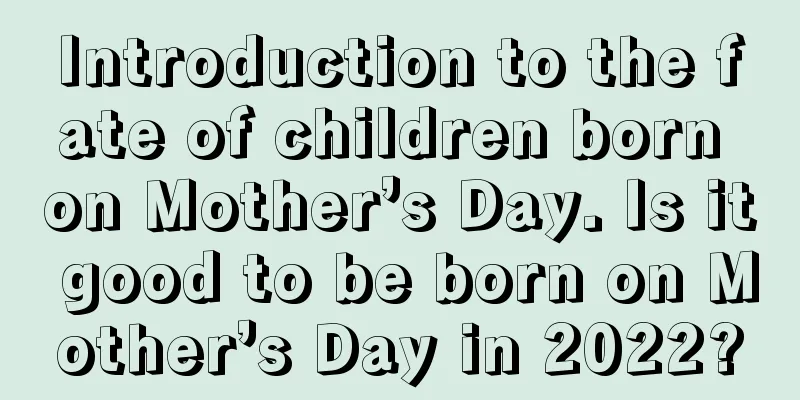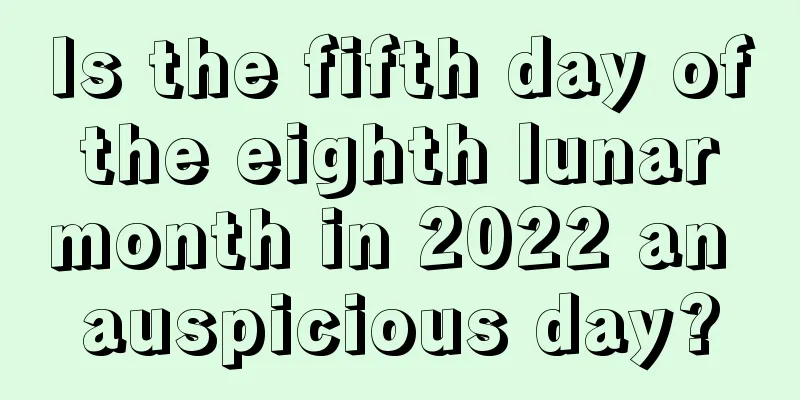What activities and rituals are there during the Torch Festival?

"Carnival Night in the West, Torch Festival in the East", Torch Festival is the most distinctive folk activity handed down by the Yi nationality. Let's take a look at the activities and rituals of the Torch Festival. The sixth month of the lunar calendar is approaching quietly, and the flowers, plants and trees are all smiling to welcome the arrival of summer. The Fortune Teller website will help you understand the days of the sixth lunar month in 2018!What are the activities and rituals of the Torch Festival?The Torch Festival has rich and colorful festive activities, mainly including bullfighting, sheep fighting, cockfighting, horse racing, wrestling, singing and dancing performances, beauty pageants, etc. The festival process, taking the most representative Liangshan Yi International Torch Festival as an example, generally lasts for three days and three nights and is divided into three stages: welcoming fire, playing with fire, and sending fire.The first day is "Duzai", which means welcoming fire. On this day, every village would slaughter cattle, sheep and pigs, and offer wine and meat to welcome the God of Fire and to worship their ancestors. Women would also make buckwheat buns and tsampa noodles. Those who were away from home would go home for a reunion dinner, and they would sit around the fire together drinking homemade wine and eating meat dumplings, sharing joy and happiness together. When night falls, people from nearby villages will build an altar at the location selected by the old man, strike flint in the traditional way to light the sacred fire, and the Bimos will chant scriptures to worship the fire. Then, in every household, the elders of the family would take torches made of mugwort stalks from the fire pit, and let the children and grandchildren take the torches from the elders, first lighting every corner of the house, and then walking around the corners of the fields and all over the mountains, using the firelight to drive away diseases and disasters. Finally, they gathered on the hillside, playing with torches, singing, dancing and playing various games. The second day of the Torch Festival is "Duge", which means praising fire and is the climax of the Torch Festival. At dawn, men, women, old and young all put on their festive attire, brought cooked meat and buckwheat buns, gathered under the sacred fire on the altar, and participated in various traditional festival activities. Thousands of people gathered together to organize activities such as horse racing, wrestling, singing, beauty pageants, pole climbing, shooting, bullfighting, sheep fighting, cockfighting, etc. The girls dressed in beautiful clothes and danced "Dolohe". On this day, the most important event is the Yi beauty pageant. The older people want to select a handsome man based on the legendary image of Heiti Laba, who is hardworking, brave, handsome and elegant. Choose a beautiful woman like Ni Zhang Azhi who is kind, intelligent, beautiful and generous. When evening falls, thousands of torches form fire dragons, rushing to the same place from all directions, and finally forming countless bonfires, burning the sky red. People dance and sing around the bonfire until late at night. The scene is grand and the atmosphere is full of joy, so it enjoys the reputation of "Oriental Carnival". When the bonfire was about to go out, pairs of young men and women in love quietly walked into the hillside and into the bushes. Under the yellow oil umbrellas, they plucked the moon guitar and played the mouth harp and expressed their love to each other. Therefore, some people call the Yi Torch Festival the "Eastern Valentine's Day". The third day of the Torch Festival is called "Doha" or "Dusha" in Yi language, which means sending off fire. This is the end of the entire Yi Torch Festival. When night falls on this day, after offering sacrifices to the God of Fire and having dinner, each household lights torches one after another, holds torches, walks to the agreed place, gathers together, sets up a fire altar, holds a fire-sending ceremony, chants scriptures and prays to the God of Fire, and prays to their ancestors and Bodhisattvas to grant their descendants health and happiness, and to grant the world a good harvest and joy. People danced with torches and chanted blessings, "Burn the plague, burn the hunger, burn the disease, and burn out a year of peace and prosperity" to pray for peace in their homes and prosperity of their livestock. At this time, the chicken wings and chicken feathers slaughtered on the first day must be burned together, and the symbols of evil spirits and disease and plague gods will also be burned along with them. Then find a larger stone and press the lit torch, chicken feathers, etc. under the stone, which means suppressing the devil, ensuring the prosperity of the family, the good harvest of crops, and the fatness of cattle and sheep. Finally, the torches from all the villages and towns on the mountain gathered together like dragons and burned into a big bonfire to show that everyone was united in defending against natural disasters. |
>>: When is the Torch Festival held in the lunar calendar every year? What are the legends?
Recommend
How to place the fish tank at home to attract wealth?
Introduction: If you want to raise fish, you must ...
What is the fate of the 24th day of the twelfth lunar month in 2017?
Introduction: People’s destinies are different thr...
Is August 12, 2020 an auspicious day for funerals? Analysis of the auspiciousness and inauspiciousness of September 28!
Introduction: Funerals generally require an auspic...
Where is the God of Wealth on the 17th day of the first lunar month in 2018?
1. What day is the 17th day of the first lunar mo...
Can I move into a new house on April 13, 2020? What is the moving date?
Choosing an auspicious day for moving. Moving at ...
What is the personality of a baby girl born on Father's Day, May 19, 2019 in the lunar calendar? Is today a good day?
Introduction: New life is born into this world eve...
Is the eighth day of the fourth lunar month in 2018 a good day? Is it suitable for signing a contract?
Chinese people have always been particularly parti...
Is the first day of April in the lunar calendar in 2021 a good day? Is it suitable for getting a haircut?
In early summer of April, the weather is getting h...
How is the fortune of the Tiger in the Year of the Rooster 2017?
Introduction: Are you born in the year of the tige...
Is it possible to propose on February 26th of the lunar calendar in 2022? Is it okay to propose on this day?
Although everyone is familiar with marriage propos...
What customs are there for the Dragon Raising its Head on February 2? What are the different customs in different places?
Our country has a 5,000-year history of civilizati...
Is July 11th in the lunar calendar 2019 an auspicious day? The fate of boys born on July 11th
Is July 11th of the lunar calendar in 2019 an ausp...
Is March 19th of the lunar calendar 2021 an auspicious day? Is traveling okay?
Every day is good and bad, and choosing a good tim...
Can the signing ceremony be held on the ninth day of the third lunar month in 2019?
The signing ceremony is actually held out of respe...
Is it auspicious to cut hair on the 26th day of the twelfth lunar month in 2021? Is it an auspicious day for haircut?
Everyone needs a haircut more or less, so people u...









